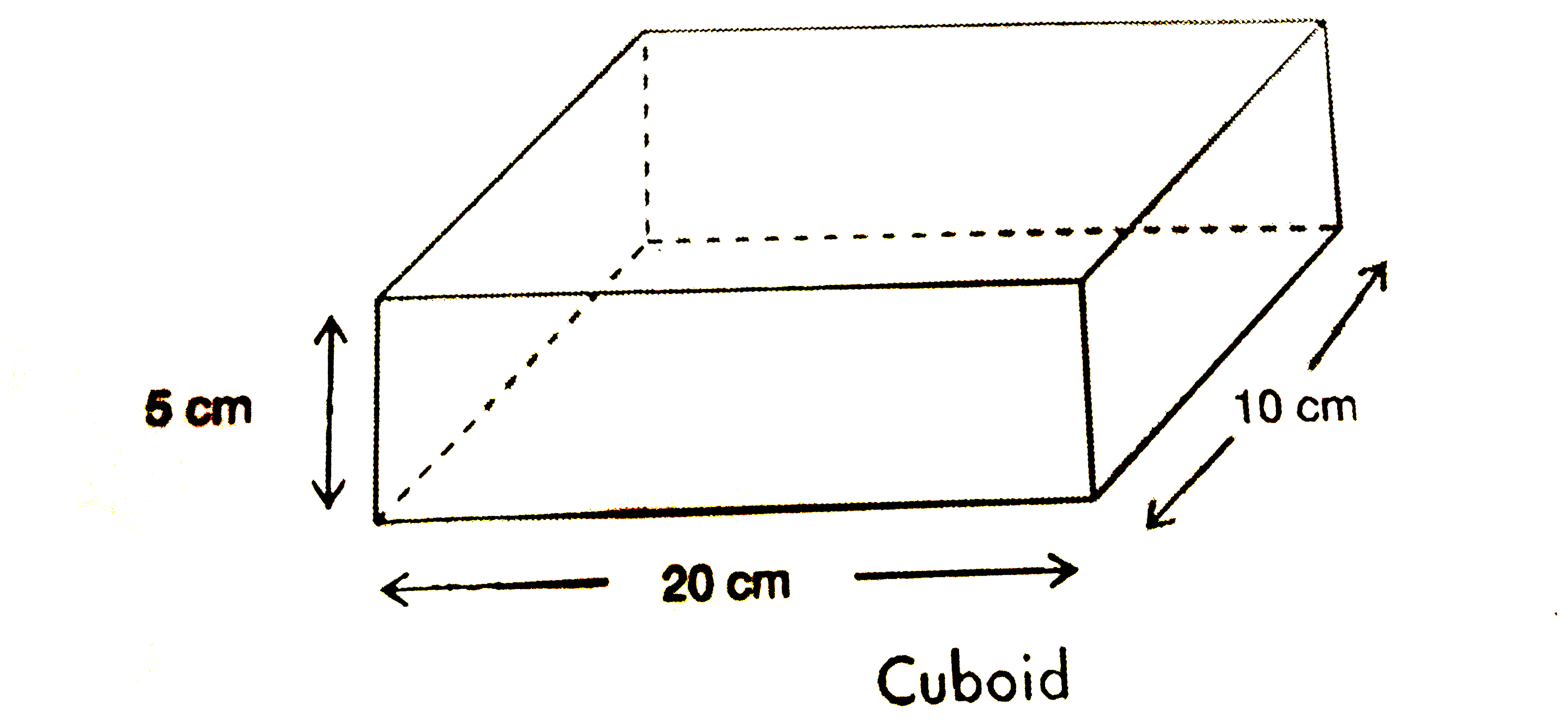A cuboid has dimensions of 0.4 mx 0.6 mx 0.2 m and a weight of 288 kgf. What is the maximum pressure exerted by the cuboid ?
To find the maximum pressure exerted by the cuboid, we will follow these steps:
Step 1: Understand the Formula for Pressure
Pressure (P) is defined as the force (F) applied per unit area (A). The formula is:
P=FA
Step 2: Identify the Force
In this case, the weight of the cuboid acts as the force. The weight is given as:
F=288 kgf
(Note: 1 kgf is equivalent to the force exerted by a mass of 1 kg under the influence of gravity, approximately 9.81 N, but we will keep it in kgf for simplicity.)
Step 3: Determine the Area
To find the maximum pressure, we need to minimize the area over which the force is applied. The cuboid has three pairs of dimensions:
- Length = 0.4 m, Width = 0.6 m, Height = 0.2 m
We will calculate the area for each face of the cuboid:
1. Area of face with dimensions 0.4 m and 0.6 m:
A1=0.4×0.6=0.24m2
2. Area of face with dimensions 0.4 m and 0.2 m:
A2=0.4×0.2=0.08m2
3. Area of face with dimensions 0.6 m and 0.2 m:
A3=0.6×0.2=0.12m2
Step 4: Identify the Minimum Area
From the calculations above, the minimum area is:
Amin=0.08m2
Step 5: Calculate the Maximum Pressure
Now, we can substitute the values into the pressure formula:
P=FAmin=288kgf0.08m2
Step 6: Perform the Calculation
Calculating the pressure:
P=2880.08=3600kgf/m2
Final Answer
The maximum pressure exerted by the cuboid is:
P=3600kgf/m2
---
Pressure (P) is defined as the force (F) applied per unit area (A). The formula is:
P=FA
In this case, the weight of the cuboid acts as the force. The weight is given as:
F=288 kgf
(Note: 1 kgf is equivalent to the force exerted by a mass of 1 kg under the influence of gravity, approximately 9.81 N, but we will keep it in kgf for simplicity.)
To find the maximum pressure, we need to minimize the area over which the force is applied. The cuboid has three pairs of dimensions:
- Length = 0.4 m, Width = 0.6 m, Height = 0.2 m
1. Area of face with dimensions 0.4 m and 0.6 m:
A1=0.4×0.6=0.24m2
2. Area of face with dimensions 0.4 m and 0.2 m:
A2=0.4×0.2=0.08m2
3. Area of face with dimensions 0.6 m and 0.2 m:
A3=0.6×0.2=0.12m2
From the calculations above, the minimum area is:
Amin=0.08m2
Now, we can substitute the values into the pressure formula:
P=FAmin=288kgf0.08m2
Calculating the pressure:
P=2880.08=3600kgf/m2
The maximum pressure exerted by the cuboid is:
P=3600kgf/m2
Similar Questions
Knowledge Check
A metal cuboid of mass M kg rests on a table surface area of 40cm2 is in contact with the table the pressure exerted by the cuboid on the table surface is 10000Pa value of M is (given that,g=10ms−2)
A20kgB5kgC4kgD2.5kg
A cuboid has dimensions as shown. If the mass of the block is 2 kg, find the minimum and maximum pressure it exerts as the orientation of the body is changed.

View SolutionA cauboid of volume 20m×10m×5m has density 3kgm−3 .Find the maximum pressure exerted by cuboid on the surface .
View SolutionA cuboid of dimensions 3m×2m×1m is placed on a surface such that the face with maximum surface area is in contact. If the weight of the cuboid is 1kgwt, the pressure exerted by it on the surface is _____. (take g=10ms−2).
View SolutionA cuboid of dimensions 3m×2m×1m is placed on a surface such that the face with maximum surface area is in contact. If the weight of the cuboid is 1kgwt, the pressure exerted by it on the surface is _____. (take g=10ms−2).
View SolutionA man weighting 50 kgf is standing on a wooden plank of 1m×0.5m. What will be the pressure exerted by it on the ground?
View SolutionA cuboid of dimensions 3m×2m×1m is placed on a surface such that the face with maximum surface area is in contact. If the weight of the cuboid is 1kgwt, the pressure exerted by it on the surface is _____. (take g=10ms−2).
View SolutionA boy has purchased a toy, which is in the form of a cuboid. The cuboid has the followign dimensionis. 0.003km×0.03m×3cm. Now the boy pours 1 litre of water into the cuboid. Will the cuboid hold 1 litre of water?
View Solution
